"Lunar Lake delivers a faster core performance than ARM": Intel is on track to change the way you think about AI PCs
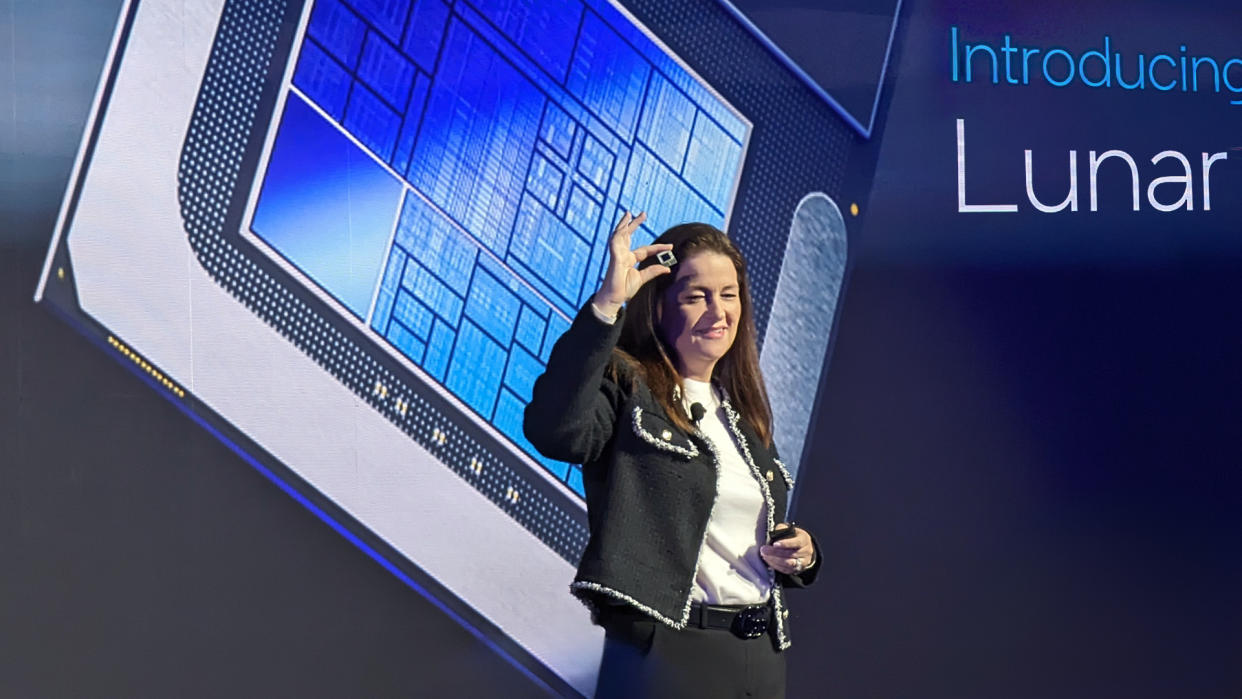
What you need to know
Executive team members unveiled specifics of Intel Lunar Lake mobile processors while hosting the company's third Intel Tech Tour in Taipei, Taiwan.
Across-the-board performance per watt improvements were demonstrated with in-house benchmark results and live demonstrations compared to previous-generation Meteor Lake devices.
Intel stresses that an AI advantage is not only related to Microsoft's Copilot+ and that anyone who bought a Meteor Lake PC is considered "future-proof," with further retorts to Microsoft's implied priority on Snapdragon X and ARM.
The most exciting technology shift in years is happening, and the laptop category is about to look dramatically different, thanks to Intel and its rivals. It stands alongside its major PC manufacturing competitors, gearing up to show off the latest innovations in raw computing power in its Lunar Lake chips, paired with genuinely revolutionary advancements in power efficiency made possible with locally processed AI in neural processing units (NPUs.)
Intel invited me to Taipei, Taiwan, to visit its most extensive Intel Tech Tour to date. Along with 280 other members of the press and partners, I heard from Executive Vice President and General Manager of Intel's Client Computing Group Michelle Johnston Holthaus and her peers as they laid bare the roadmap for the Lunar Lake system-on-chip (SoC) and the target to "win in performance, graphics, and AI." Comparisons to Qualcomm's Snapdragon X platform and AMD's next-gen plans are inevitable, so let's briefly dig into what I found, with deep dives to come later this week.
Lunar Lake (almost) entirely unveiled
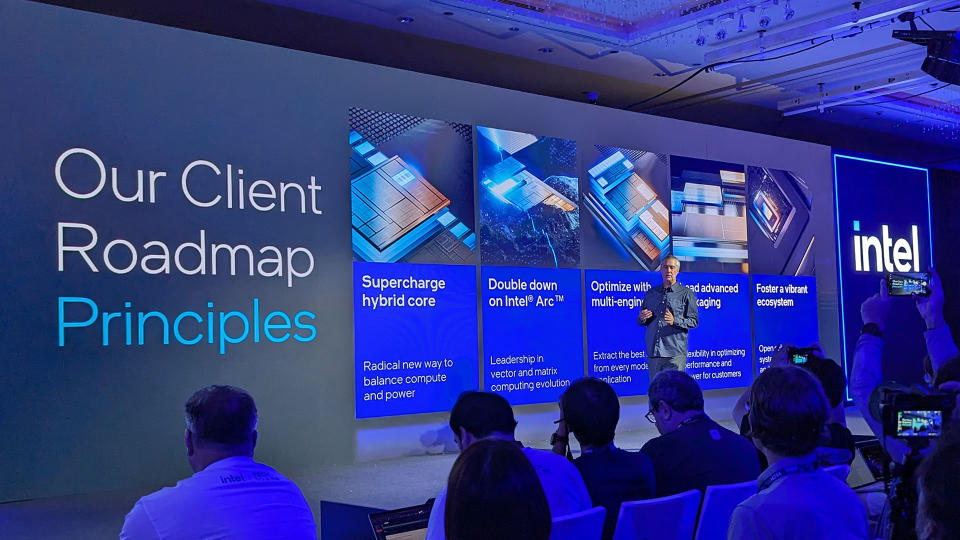
Intel provided a host of talks explaining how Lunar Lake has improved over its predecessor, Meteor Lake, which was responsible for the first batch of Intel Core Ultra mobile chips. Hailed as a "transition to the AI PC," Intel was keen to describe Meteor Lake as having brought users a "radical new experience" with its dedicated NPU running at a peak of 11.5 TOPS. It's the metric you'll continue to see for the foreseeable future, as targeting the highest tera operations per second while maintaining power efficiency is the new performance crown for PC brands to fight for.
At Intel, we're dedicated to (bringing) as much compute capability into the PC (as possible) while also maintaining that wonderful long battery life and quiet performance.
Lunar Lake bumps up its NPU-specific score to an impressive 48 peak TOPS. This is beyond the requirement for running Microsoft's Copilot+ locally, and becomes part of the equation that provides the 120 total platform TOPS (PTOPS) when harnessing another 67 TOPS from the GPU with the rest provided by the rest of the compute tile. It's all about the intended use of AI computing, with batches of burst processing better suited to a new and improved Xe2 GPU while the next-gen NPU 4 handles tasks requiring faster acceleration while still offering double the efficiency compared to Meteor Lake.
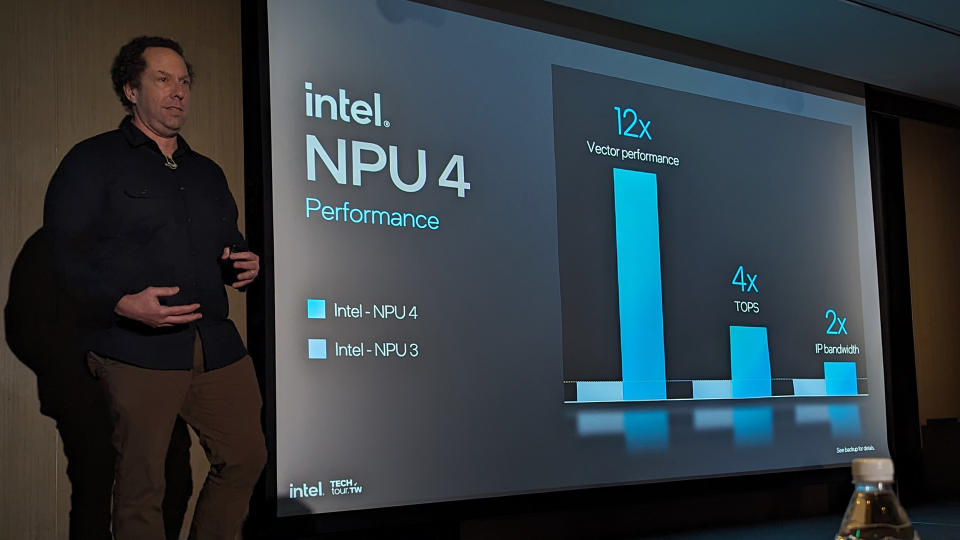
The primary benefit of accepting an invitation to Intel's Tech Tour is seeing the fruits of Lunar Lake's upgrades in real-time. Senior Principal Engineer and NPU Lead Architect Darren Crews showed me live demonstrations of generative AI harnessing Stable Diffusion to create images in a rapid 5 seconds, with Meteor Lake coming up behind at what now seems a meager 22 seconds. It came with plenty of deep-dive explanations that I'll get into later this week, but seeing these results happen right in front of my eyes feels like enough proof to believe that Intel is ready to fight and retain its crown as the processing king of the hill.
However, performance improvements are only half of the puzzle. Intel is committed to maintaining a solid grip on power efficiency with its upcoming wave of Lunar Lake-powered devices from OEM partners. Another live demo showed a live-streamed 4K 24 FPS YouTube video running side-by-side on a Lunar Lake reference laptop and a comparable Meteor Lake model from Lenovo, with the former pulling consistently lower wattage. When quizzed about the potential for scaling its hardware for ever-higher TOPS scores, Intel clarified that it selected and refined everything for a perfect balance of performance-per-watt.
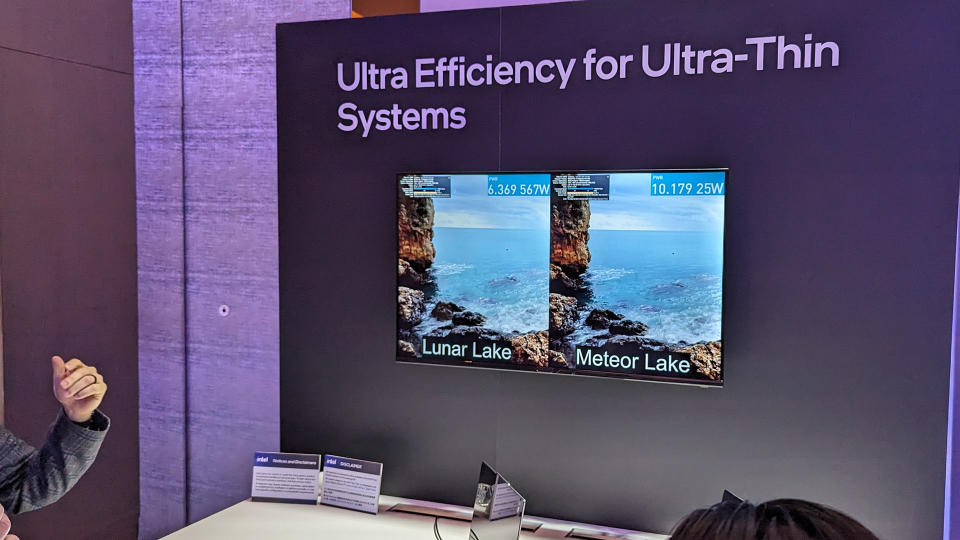
Despite all the fantastic promises, no Intel representative would reveal specifics to me regarding average or peak TDP when quizzed on any SoC component, so some numbers are still held secret until Lunar Lake OEM devices appear in preparation for a planned launch in the holiday buying cycle this year. Nevertheless, intricate explanations of the impressive new 'Skymont' architecture powering Lunar Lake's improved efficient cores (E-core) showed how the upgraded low-power island can handle most everyday computing tasks.
For battery life, Lunar Lake reduces the SoC power by up to 40%. This is a major step for mobile and you WILL notice it.
That's not to discredit the next-gen 'Lion Cove' performance cores (P-core) as significant gen-on-gen improvements to single thread performance promise boosts while taking advantage of state-of-the-art power management allowed by Intel's Thread Director, alongside Intel's Foveros-powered memory on package integration offering up to 32GB of LPDDR5x DRAM directly on the SoC. Of course, better performance and improved efficiency would never come as a surprise in a new generation of mobile chips. Still, the sheer degree of breakthroughs Lunar Lake offers makes it feel like the most significant shift for Intel in a while.
Battlemage finally arrives with Xe2 GPU
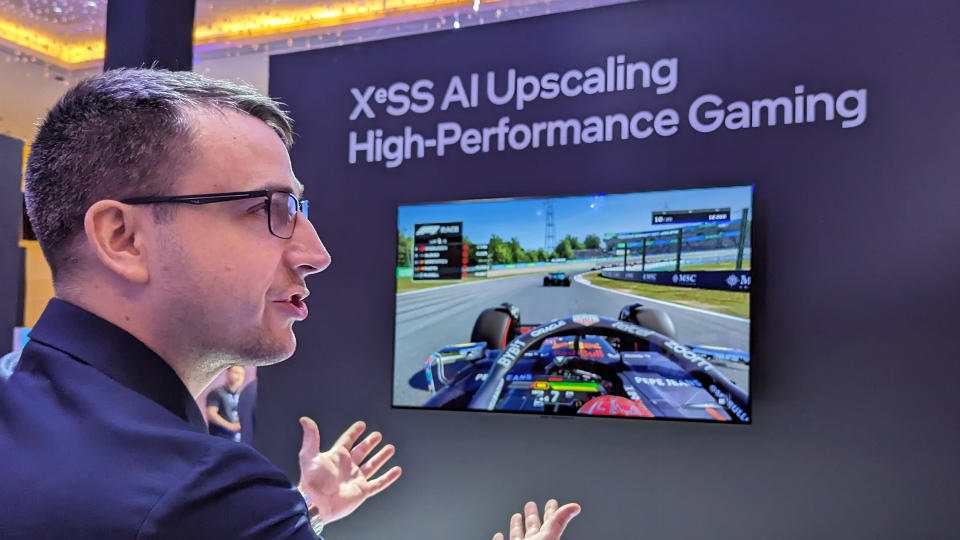
Since the Arc graphics platform made its way to laptops and desktops, I've been a big fan of Intel's GPU efforts, and I still keep an Intel Arc A750 in one of my home desktops for regular use. The in-house graphical tech launched with a somewhat rocky affair for Intel, as compatibility struggled and performance didn't fare much better. However, follow-up months have delivered significant improvements with game-specific fixes in new drivers.
Intel Arc has shaped itself into a big hitter against NVIDIA and AMD with its first-party XeSS image upscaling technology, and it's about to become even better as the long-awaited codename 'Battlemage' Xe2 engine comes to Lunar Lake mobile chips. Tom "TAP" Petersen, previously of NVIDIA, boasts that "(Intel's) graphics driver is now world-class," as he proudly revealed how the Lunar Lake SoC now supports the same AI-acceleration 'XMX' matrix engines previously found in its desktop cards.
We're doubling down on Intel Arc graphics (which are) foundational for our experiences.
The depths that TAP reached when intricately explaining how the new microarchitecture for Lunar Lake's media and display engines benefits a system overall were almost bottomless. Still, he didn't avoid the topic of gaming. On the contrary, his delightful talk showed much promise for the future of AAA titles, showing a yet-unreleased copy of F1 2024 running on Lunar Lake at over 60 FPS while upscaling to 1080p with XESS and ray-traced shadows enabled in-game. "When we launch, you're gonna see dramatically better game compatibility," Petersen says with a smile, and I could have watched his charismatic talks all day long.
A host of exciting tech and hands-on demos
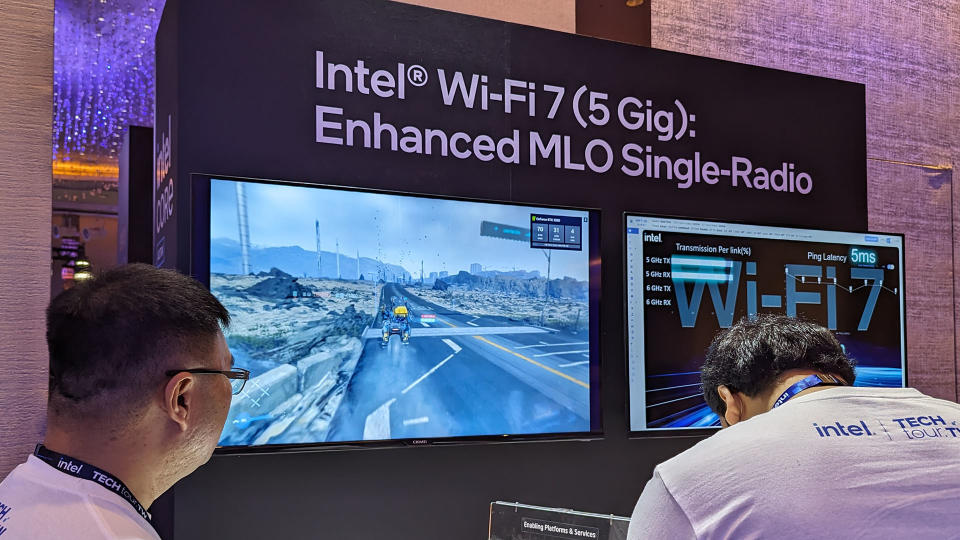
While there was an undeniable focus on the compute tile and the supercharged cores within, Lunar Lake still had plenty to show in other areas as the Intel Tech Tour opened its doors to other hands-on demos. Intel gave examples of the ultra-high-speed Internet streaming enabled by next-generation Wi-Fi 7 tech as Death Stranding gameplay was being played live from NVIDIA GeForce NOW, alongside upcoming consumer routers designed to support the new standard.
Next door, a demonstration of 'Thunderbolt Share' showed fantastic examples of connecting multiple PCs with current-gen Thunderbolt 4 or next-gen Thunderbolt 5. Seamless file transfer and desktop sharing aren't exclusive to Lunar Lake with this tech but are an example of the continued evolution of Intel's modern chips. It was one of the fascinating Lunar Lake-adjacent booths hosted during the Intel Tech Tour during my stay in Taipei. I'll explain more throughout the week, so check back here at Windows Central to hear more soon.
Is Intel ready for Microsoft's Copilot+ PCs?
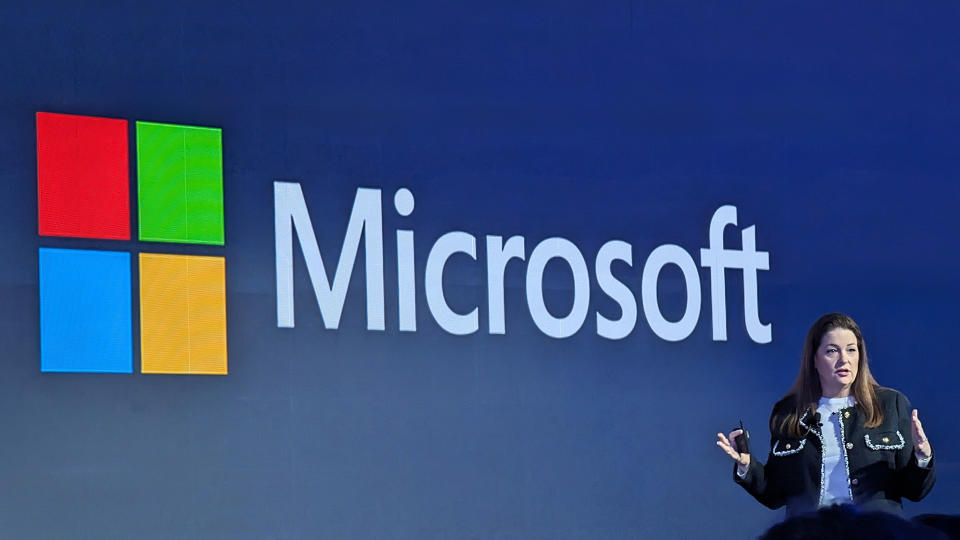
Despite Microsoft's apparent prioritization of Windows on ARM, Michelle Johnston Holthaus says that Lunar Lake hardware is ready for Copilot+ and will go to market in Q3 of 2024. However, Intel is waiting for Microsoft's official word on when Copilot+ will be available as a same-day download. ARM might have been first in the Copilot+ AI PC category, but Michelle firmly believes that Intel will get to market and ship more than its competitors despite acknowledging a gap between Snapdragon X and Lunar Lake.
I think we can all agree that Lunar Lake will bring unmatched global scale to Copilot(+) PCs later this year.
Comparisons to ARM and Qualcomm's Snapdragon X platform were unavoidable during the Q&A portions of the Intel Tech Tour. In her opening keynote, Michelle stated, "Lunar Lake delivers a faster core performance than ARM." She followed with a not-so-subtle jab that Intel won't "cherry-pick a handful of apps that we know are compatible" to highlight Lunar Lake performance improvements, referencing the recent Snapdragon X Elite benchmarks shared by Qualcomm.
Pushed for clarification, Michelle explained that Intel primarily tested Lunar Lake against its previous-gen (Meteor Lake) hardware, accounting for the percentages and other metrics I saw during the tour. Regarding Snapdragon X Elite, Intel only compares Lunar Lake against data shared publicly by Qualcomm and will enter lab testing with Snapdragon X devices when they become commercially available.
Everything I've mentioned so far only touches on what I learned during this year's Intel Tech Tour, and I'll follow up with more insights soon, at least when my jetlagged brain returns to normal operation. Taipei is an incredible wonderland of technology, but it couldn't be further away from the United Kingdom, and I need some bland food and weak tea to recover.

